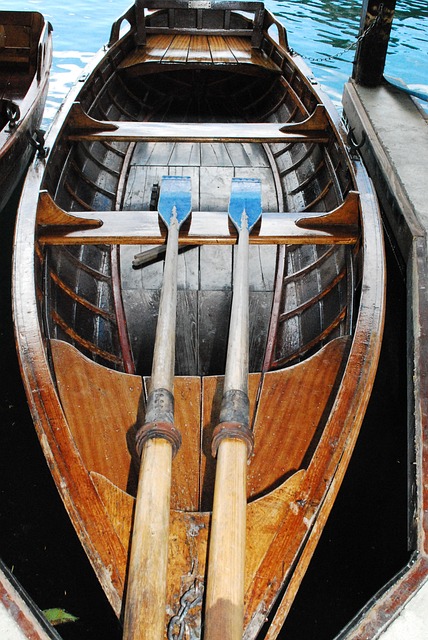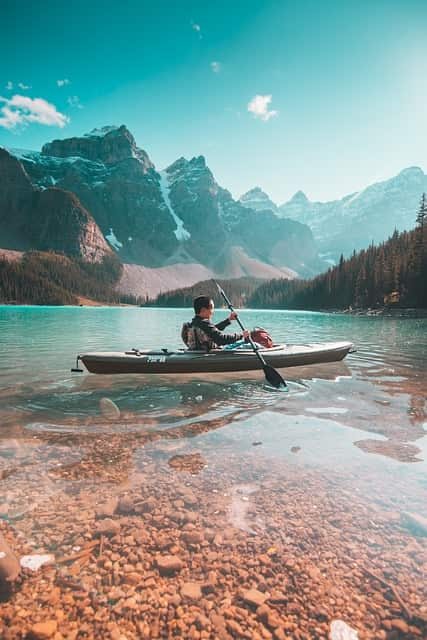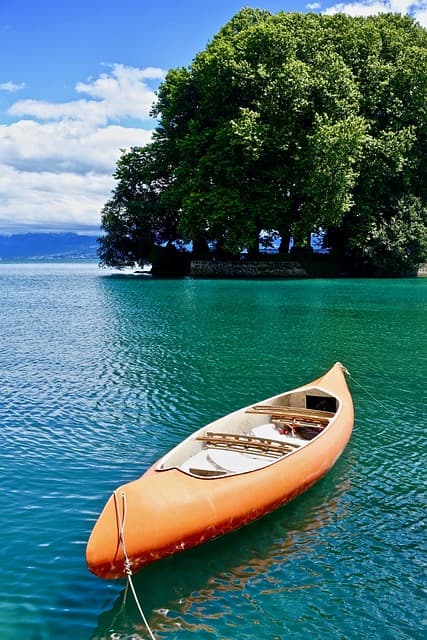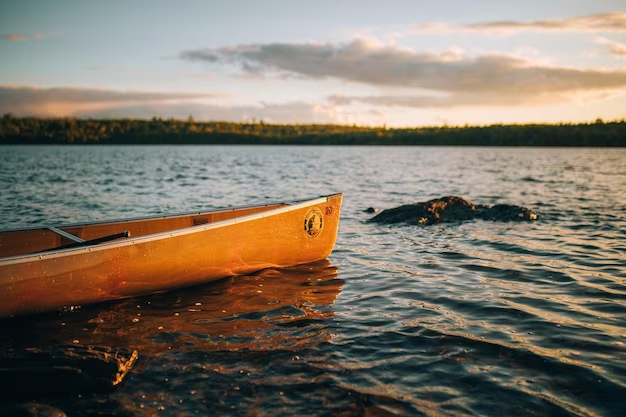Canoeing has long been cherished for its serene exploration of waterways, but the world of canoeing has more to offer than just tranquility. Fast canoes, designed for speed and performance, bring an entirely different dimension to the sport. In this article, we delve into the world of fast canoes, exploring their design, techniques, benefits, and frequently asked questions.
The Need for Speed
Canoeing has evolved from a leisurely activity into a competitive sport. Fast canoes cater to paddlers who crave the thrill of speed and the challenge of mastering swift currents. These specialized canoes are crafted to slice through the water with minimal resistance, allowing experienced paddlers to achieve impressive speeds.
Design and Construction
The design of a fast canoe is the cornerstone of its speed prowess. Here are some key features that contribute to their remarkable performance:
Hull Shape
The hull shape is the canvas upon which the art of speed is painted. Fast canoes exhibit a distinct hull shape that is both sleek and narrow. This form is not just visually appealing; it’s the result of engineering precision. The benefits of this design are manifold:
- Reduced Drag: The narrow profile of the hull serves as a masterstroke against drag. By minimizing the surface area that comes into contact with the water, these canoes effortlessly glide through, slicing the water rather than pushing against it;
- Enhanced Speed: The minimized drag translates to enhanced speed. With less resistance to overcome, fast canoes are able to maintain high velocities, making them a favorite among competitive paddlers.
Length
The length of a canoe has a profound impact on its speed dynamics. The rule of thumb is longer canoes equate to higher speeds, thanks to a longer waterline. However, this harmony between length and speed comes with a caveat:
- Bow Wave Resistance: Longer waterlines reduce bow wave resistance, a force that can slow down canoes. The extended length allows the canoe to gently part the water, rather than crashing through it. The result is a smoother ride and less energy wastage;
- Maneuverability: As the length increases, maneuverability can become more challenging. It’s like a ballet dancer handling a sweeping gown – grace and agility might require more finesse. The paddler’s skill comes into play here, navigating the balance between speed and control.
Materials
The materials used in constructing fast canoes are akin to selecting the finest instruments for an orchestra. Carbon fiber, Kevlar, and fiberglass are the virtuoso choices:
- Carbon Fiber: Renowned for its featherlight weight and impressive strength-to-weight ratio, carbon fiber is like the maestro’s baton, conducting a symphony of speed and durability;
- Kevlar: Often used in conjunction with carbon fiber, Kevlar contributes resilience to the hull. It’s like the protective armor, shielding the canoe against potential impacts without weighing it down;
- Fiberglass: This material is the versatile performer, offering a balanced blend of affordability, strength, and ease of manipulation during construction.
Rocker
Rocker adds a touch of artistry to the science of canoe design. It refers to the curvature of the hull from bow to stern. In the realm of fast canoes, less is often more:
- Straighter Tracking: Minimal rocker allows the canoe to track straighter. This is akin to a thoroughbred staying on a precise racing line. Straight tracking not only reduces energy wastage but also maintains consistent speed.
Stability vs. Speed
The pursuit of speed in canoe design involves a delicate trade-off between stability and velocity:
- Sacrificing Stability: Fast canoes are designed to be agile and swift, often at the expense of some stability. Paddlers embarking on these vessels need to bring their A-game, showcasing exceptional balance and technique to harness their speed potential.
Techniques for Speed Paddling
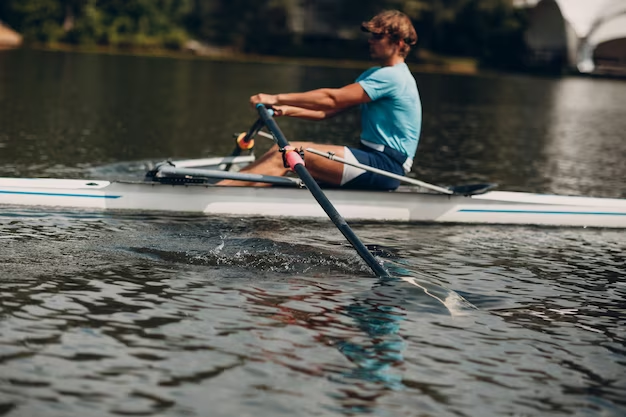
Paddling a fast canoe requires a combination of technique, skill, and physical endurance. Here are some techniques to master for achieving maximum speed:
1. Powerful Strokes
Every stroke you take is an opportunity to propel your canoe forward with authority. The core principle lies in generating both power and momentum, harmonizing the muscular strength of your arms and the rotational force of your torso. As you grip the paddle, visualize drawing energy from your core and channeling it into each stroke. The table below provides a breakdown of the key elements that contribute to powerful strokes:
| Component | Technique |
|---|---|
| Core Engagement | Initiate each stroke by engaging your core muscles. |
| Torso Rotation | Rotate your torso to utilize the force generated. |
| Arm Strength | Your arms contribute to the power behind each stroke. |
| Fluid Motion | Create a fluid motion by coordinating your movements. |
2. Proper Paddle Entry
Efficiency is paramount when it comes to paddling for speed. The angle at which your paddle enters the water plays a pivotal role in minimizing resistance and maximizing the forward thrust. Imagine your paddle as a precision instrument, carefully calibrated to slice through the water with minimal turbulence. The subtle adjustment of the paddle entry angle can make a remarkable difference, as depicted in the following table:
| Entry Angle | Efficiency Impact |
|---|---|
| Slight Angle | Smooth entry minimizes turbulence and reduces drag. |
| Vertical Entry | Increased resistance slows down the canoe. |
| Aggressive Angle | Turbulence hampers efficiency and speed. |
3. Maintaining Cadence
Achieving optimal speed is not about exerting raw force, but rather about maintaining a harmonious rhythm. A consistent cadence allows the canoe to glide through the water without unnecessary fluctuations in speed. Instead of rushing through strokes or adopting an irregular pace, focus on establishing a cadence that enhances efficiency and maintains momentum. The following considerations contribute to a rhythmic cadence:
- Breathing Harmony: Sync your breathing with your strokes to establish a seamless rhythm;
- Paddle Timing: Coordinate the timing of your strokes to create a natural flow;
- Pacing Strategy: Adapt your cadence to suit the water conditions and the desired speed.
4. Body Positioning
The way you position your body in the canoe significantly impacts both stability and power generation. Maintaining an upright posture while distributing your weight evenly ensures that you can exert force effectively without compromising balance. The table below underscores the elements of optimal body positioning:
| Aspect | Guidelines |
|---|---|
| Upright Posture | Sit straight to maximize power and maintain balance. |
| Weight Distribution | Evenly distribute your weight for stability. |
| Lower Body Engagement | Use your legs for added stability and power transfer. |
| Relaxed Grip | Avoid unnecessary tension in your grip for fluidity. |
5. Use of Leaning
While speed is a linear pursuit, navigating turns is an inevitable aspect of canoeing. Leaning into turns allows the canoe to pivot smoothly while preserving speed. It’s a subtle technique that requires coordination and finesse. The table below elaborates on the art of leaning into turns:
| Turning Technique | Key Aspects |
|---|---|
| Controlled Leaning | Lean into turns to initiate controlled pivoting. |
| Counterbalancing | Counterbalance your weight to prevent tipping. |
| Minimal Speed Loss | Execute turns without sacrificing too much speed. |
| Practice Precision | Hone your skill to achieve precise turning angles. |
Benefits of Fast Canoeing
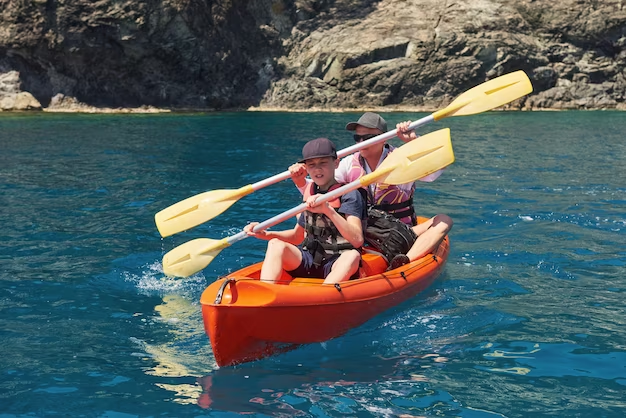
Engaging in fast canoeing offers a range of benefits beyond the adrenaline rush:
Elevating Physical Fitness
Embrace the symphony of physical exertion as you propel your canoe at exhilarating speeds. Every powerful stroke engages a harmonious ensemble of muscle groups, sculpting your body and boosting your overall fitness. The following table showcases the multifaceted benefits for your physical well-being:
| Benefit | Muscles Involved |
|---|---|
| Cardiovascular Health | Engage your heart and lungs for an invigorating workout. |
| Core Strength | Strengthen your core muscles with each stroke. |
| Upper Body Power | Develop robust arms, shoulders, and back muscles. |
| Lower Body Stability | Utilize your legs for balance and stability. |
Sharpened Mental Focus
As the canoe glides at high speeds, your mind dances through a choreography of quick decisions, precise strokes, and strategic navigation. The dynamic nature of fast canoeing hones your cognitive abilities and elevates your concentration levels. It’s a mental symphony that unfolds on the water, amplifying your mental acumen and decision-making prowess.
Harmonious Connection with Nature
The swift pace of fast canoeing doesn’t sever your ties with nature; instead, it deepens your connection. Feel the gentle caress of the breeze, listen to the rhythm of the water, and witness the beauty of nature from a unique vantage point. The table below illustrates the harmonious coexistence of speed and nature:
| Experience | Nature’s Bounty |
|---|---|
| Tranquil Exploration | Absorb the serene beauty of water bodies and landscapes. |
| Wildlife Encounters | Encounter nature’s inhabitants up close and personal. |
| Primal Connection | Immerse yourself in the primal elements of water and wind. |
Thriving on Competition and Camaraderie
For those with a penchant for competition, fast canoeing unfurls a vibrant tapestry of racing events and a community of kindred spirits. Racing against the clock and fellow paddlers ignites your competitive spirit, while forging bonds with like-minded individuals enriches your social landscape. The following table illuminates the dual essence of competition and camaraderie:
| Aspect | Unveiled Dimension |
|---|---|
| Racing Adrenaline | Participate in races that test your speed and strategy. |
| Shared Enthusiasm | Connect with fellow paddlers who share your passion. |
| Knowledge Exchange | Learn from experienced racers and enhance your skills. |
Conclusion
Fast canoeing isn’t just about going fast; it’s about embracing the challenges, techniques, and exhilaration that come with the sport. The design intricacies, paddle techniques, and benefits make it a thrilling choice for those seeking a more intense experience on the water. Whether you’re a competitive racer or a nature enthusiast, exploring the world of fast canoes can open doors to a world of excitement and skill refinement.
FAQ
Absolutely, but it’s recommended to start with a stable and wider canoe. As skills develop, paddlers can transition to faster canoes.
Consider factors such as your experience level, intended use (recreation, racing, etc.), and budget. Consult with experts or try different canoes before making a decision.
Safety is paramount. Fast canoes require enhanced skills. Wear a life jacket, practice in controlled environments, and take lessons if necessary.
Some modifications, like optimizing your paddling technique, can help. However, radical changes in hull design might not be feasible.
Yes, many racing events and regattas specifically cater to fast canoe enthusiasts. These events offer a platform to showcase your skills and compete against other paddlers.
